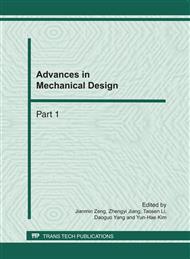p.1958
p.1967
p.1973
p.1978
p.1984
p.1988
p.1993
p.1999
p.2005
The Preparation and Application of Chitosan Derivatives for Ni Coating on ABS
Abstract:
The chitosan derivatives(S-CTS and RS-CTS) were prepared and the application of the derivatives in surface activation process for Ni electroless plating was exploited. S-CTS was prepared by shiff-base reaction of CTS with salicylic aldehyde and RS-CTS was prepared by reduction reaction of S-CTS with KBH4. The results of FT-IR spectroscopic characterization showing the formation of C=N in S-CTS and C-N in RS-CTS indicated that the above reactions occurred in the supposed route. The thermal properties of the derivatives were studied by Thermogravimetry-Differential thermal analysis (TG-DTA) methods. It is suggested that the thermal stabilities of CTS derivatives were better than that of CTS. Furthermore, RS-CTS is capable of forming even films on ABS surface and adsorbing adequate Ni nano-catalysts for follow-up electroless plating. Optic tight and dense plating layers were finally obtained. It is showed that RS-CTS could be applied as a biopolymer film in activation process for electroless plating.
Info:
Periodical:
Pages:
1999-2004
Citation:
Online since:
February 2011
Authors:
Keywords:
Price:
Сopyright:
© 2011 Trans Tech Publications Ltd. All Rights Reserved
Share:
Citation:


